#phayao
Text
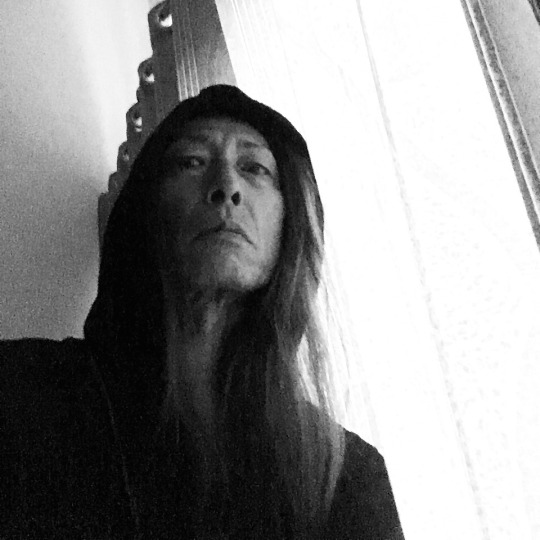
2 notes
·
View notes
Link
Thailand photo gallery : Bangkok - Mae Hong Son - Chiang Mai - Sukhothai - Ayutthaya - Phayao - Chiang Rai - Phitsanulok - Si Satchanalai - Phrae - Sing Buri - Chiang Saen - Pai - Tham Lot
#Thailand#Bangkok#MaeHongSon#ChiangMai#Sukhothai#Ayutthaya#Phayao#ChiangRai#Phitsanulok#SiSatchanalai#Phrae#SingBuri#ChiangSaen#Pai#ThamLot
2 notes
·
View notes
Text



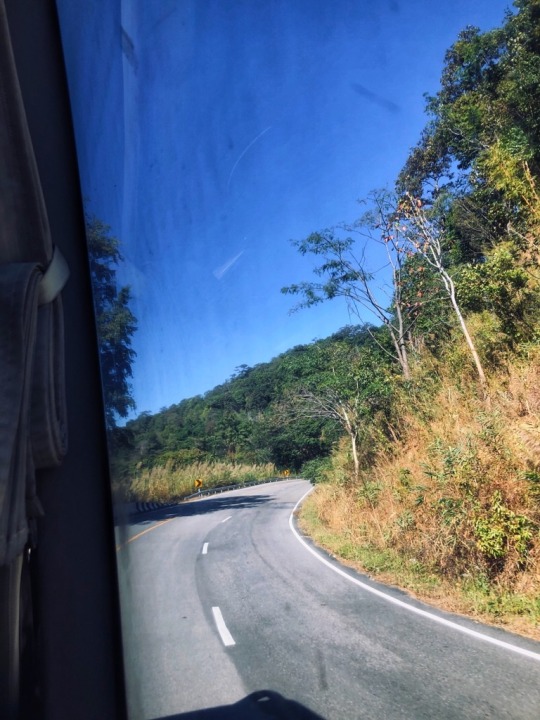
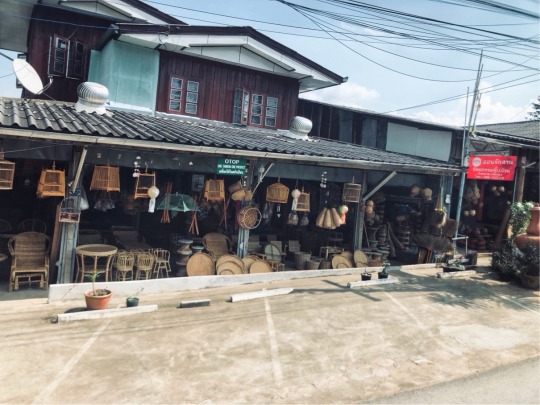
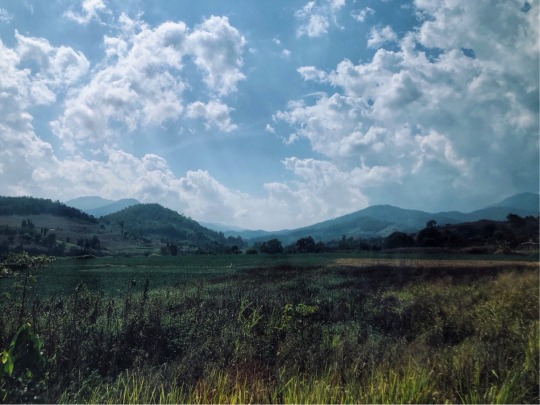

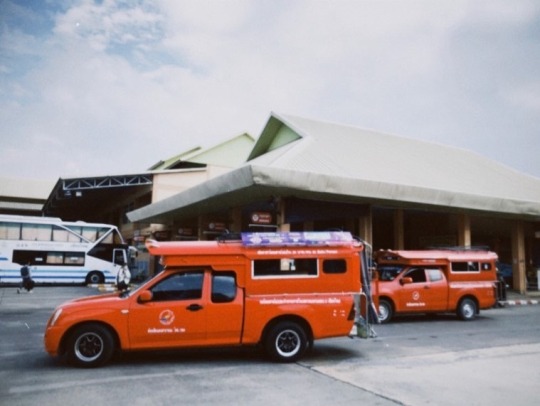


#thailand#tourism#chiang mai#phayao#travel#street photography#ohayo prayers#life#art#bookblr#bobowhips
0 notes
Text

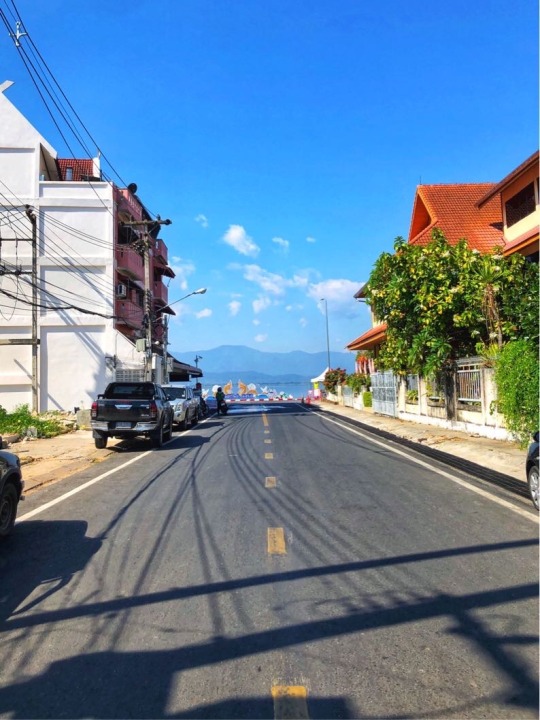
#cottagecore#cozycore#life#thailand#phayao#ohayo prayers#hilltop insane clinic#mental health#tourism
1 note
·
View note
Text

Tagebucheintrag.
19.11.2023 (Phayao Schinn-Tumnon Guesthouse)
Kurz gefrühstückt und dann habe ich noch etwas Ratchet and Clank gespielt. Um 12:30 Uhr bin ich dann aus Chiang Rai losgefahren Richtung Phayao. Der Weg bestand nur aus Schnellstraße und war somit recht uninteressant. Als ich ankam, habe ich eben meine Sachen abgelegt und fuhr in die Stadt, die an einem riesigen See liegt. Dort habe ich dann meine Drohne in die Luft geschmissen und im Sonnenuntergang etwas gefilmt und fotografiert. Ich saß dann noch etwa eine Stunde einfach am Wasser und habe die Seele baumeln lassen. Dann kam der Hunger, und ab auf den Nachtmarkt. Dieser war ziemlich groß, und ich bin insgesamt 4 mal drüber gelaufen, bis ich mir dann alles zusammengesucht hatte, was ich wollte. Sushi, Hähnchen, Schokowaffel, einen Salat und einen Melonen Smoothie. Ich fuhr mit dem Essen in meine Unterkunft, hörte beim Essen etwas Podcast, machte noch ein wenig Videoschnitt, und dann, gute Nacht.
#Frühstück#Ratchet and Clank#Chiang Rai#Phayao#Schnellstraße#Drohne#Sonnenuntergang#Stadt#See#Nachtmarkt#Sushi#Hähnchen#Schokowaffel#Salat#Melonen Smoothie#Podcast#Videoschnitt#mauriceodyssee
1 note
·
View note
Photo

Couché de Soleil à Phayao 🇹🇭 www.apprendrelethai.com #apprendrelethai #parlerthai #thailande #phayao #phayaolake #asia #language #ประเทศไทย #bangkok #phuket #chiangmai #motdujour #thailandais #sawadeechris (à Payao Province) https://www.instagram.com/p/CnHx1tvPDhK/?igshid=NGJjMDIxMWI=
#apprendrelethai#parlerthai#thailande#phayao#phayaolake#asia#language#ประเทศไทย#bangkok#phuket#chiangmai#motdujour#thailandais#sawadeechris
1 note
·
View note
Photo

กาแฟดีนะ ร้านนี้ #coffee #phayao (at PHOON Cafe' phayao) https://www.instagram.com/p/CeNMm0PPDSy/?igshid=NGJjMDIxMWI=
0 notes
Text
Info for writer in Thai series fandom: Cultural differences in each area
Depending on what we want to talk about, we can divine it in a variety of ways. Now that we're talking about culture, I'll use the one divided into four sections, as shown in this map.
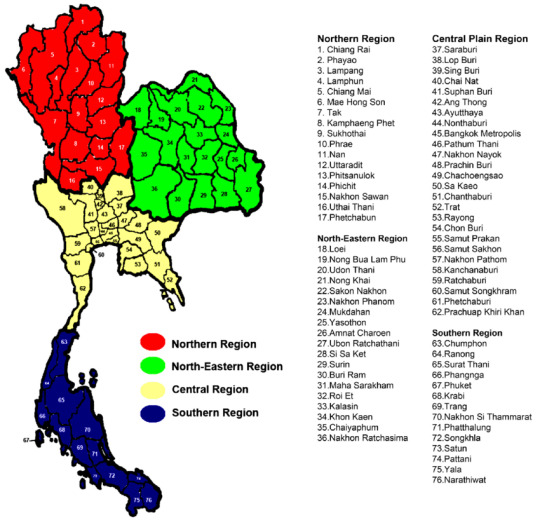
These four are Northern, Northeastern (Isan), Central, and Southern.
The majority of the series are set in Bangkok, which is in Central Thailand, so that is what you usually see.
Language
Our official language is Central Thai, but we have quite a lot of others. Northern Thai (Khammueang) from the north, Isan from the northeast, and Southern Thai from the south are the most popular in each area If we don't count the official one.
Kham Muang has a similar grammar, only a little different from the Central Thai language, but uses different vocabulary. Originally used in conjunction with the Tham Lanna script, which is the alphabet of the Lanna Kingdom that uses the Mon alphabet as a model, Kham Muang can be divided into Western Lanna accents. (in Chiang Mai, Lamphun, and Mae Hong Son) and an Eastern Lanna accent (in Chiang Rai, Phayao, Lampang, Uttaradit, Phrae, and Nan), which are partially different.
The Isan language, or Isan Lao language, is a local development of the Lao language in Thailand. Local speakers still think of it as Laotian. The Thai government recognizes this language as one of a Thai language.
Southern Thai has a high concentration of language speakers in the fourteen provinces of southern Thailand. Some are scattered in Prachuap Khiri Khan Province. Tanintharyi Region in Myanmar and around Kedah State, Perlis State, Penang State, and Perak State in northern Malaysia. There are about five million native speakers, and about 1.5 million use it as a second language. These include Chinese, Peranakan, Malay, Uraklavoi, and Mani ethnic groups.
They each have their own subset of accents and dialects.
We also have "copper language(ภาษาทองแดง)," which the Dictionary of Southern Dialects B.E. 2525(1982) mentions as a way to speak where the speaker is "speaking a central Thai language mixed with a southern language or speaking distorted," which includes anyone who uses the Thai language in a way that deviates from the standard set, not limited to being a person in any region or province.
I've heard a lot of stories about people from an area that doesn't use Central Thai that have misunderstand some sentences as being in the actual Central Thai language. But it's actually not, and it just contains Central Thai words, but not in the same way that people in Central Thailand would understand them as Central Thai. So when they moved to Central Thailand for any reason, they'd use them and expect Central Thai people to understand them a certain way, and they had to find out in an inconvenient way.
EX:pai song ไปส่ง
Central = to take someone to their destination but not stay with them after doing so.
Northern = to take someone to their destination, stay with them throughout whatever activity they intend to do there, then go back together.
As I said at the beginning, Central Thai is our official language, so that is the language that is taught in school. Other languages are usually taught by unofficial means, so it is not uncommon for the new generation to not be able to speak them fluently even when they come from a household that does. But sometimes everyone in the area speaks the other language, so even the teacher in school who is supposed to teach kids central Thai is not that fluent in it. It can be that case too.
As a person who only knows Central Thai, I can recognize some popular words in the others and understand some words that sound just a bit different, but if someone truly speaks in those languages, I will likely be unable to follow the conversation.
In the clip below, at 17.30, they use a word play with Isan and Central. Kha (ค่า) means worth, while Kha (ข่า) means galangal. In a Central Thai accent, these two words will have different tones, but in an Isan accent, Kha (ข่า) will sound just like Kha (ค่า) in Central Thai.
youtube
Food
Most northern dishes have a mild flavor. Fermented soybeans are commonly used in cooking. There are many types of chili paste. The carbohydrate sources are mainly glutinous rice.
Isan food has a distinctive taste that is salty from fermented fish sauce, spicy from fresh and dried chili, and sour from local vegetables such as tamarind. Isan people use pickled fish as a seasoning for almost all kinds of food, such as bamboo shoot soup, om, mok, and various chili pastes, as well as papaya salad, for example. The menu focuses mainly on seasonal vegetables. The carbohydrate sources are mainly glutinous rice.
The central region has long been a trading center and has been in contact with foreign countries for a long time, causing food to be influenced by many nations. And, as the King's residence during various reigns, the recipes have been developed to be meticulous. The taste of food will not focus on any particular flavor. It must be salty, spicy, sour, and sweet together to be considered good, variety of flavorings are used to achieve that. Coconut milk is used in many foods. The carbohydrate sources are mainly rice.
The southern region is the region with the most coastal areas. There is seafood as the main food. It is cooked with herbs to mask the fishy smell, especially turmeric. The taste is quite strong, and many dishes have vegetables to eat along with it to reduce the spiciness. The carbohydrate sources are mainly rice.
Geography
for geography, we usually divide it into six parts.

North
Most of the terrain consists of mountain ranges interspersed with plains and valleys.
The most important mountain ranges are Luang Prabang, Dan Lao, Thanon Thong Chai, Phi Pan Nam, Khun Tan, and Phetchabun Mountain Range.
Cities located in the basin area, such as Chiang Mai, are often facing serious air pollution problems.
The highest peak in the north and in the country is Doi Inthanon.
It is the headwaters of Thailand's four major rivers, namely the Ping, Wang, Yom, and Nan.
Central
It is a river plain. It is split into upper and lower central sections.
The upper central region has a high- and low-Undulating Plain landscape.
The Ping River and Nan River flow together at Pak Nam Pho, which is the source of the Chao Phraya River.
The lower central region is a wide plain formed by river sediments, suitable for cultivation.
Northeast
The terrain is mostly plateaus and mountain ranges.
There are Dong Phaya Yen Mountain Range, Phetchabun Mountain Range, Phanom Dong Rak Mountain Range, and San Kamphaeng Mountain Range.
It has the Chi and Mun rivers, which are important rivers that flow into the Mekong River.
Eastern region
The terrain consists of river plains and coastal plains.
There are Khao Banthat and Chanthaburi mountains in the middle of the region.
There are lined islands such as Koh Chang, Koh Kood, Koh Sichang, Koh Lan.
Prachinburi Province and Sa Kaeo are not connected to the sea. The region's other provinces all have seaports.
Western Region
The terrain is mountainous, with alternating plains and valleys similar to those in the north.
Phetchaburi and Prachuap Khiri Khan are connected to the sea.
Thanon Thongchai and Tanaosri are significant mountain ranges.
It is the origin of the Kwai Noi River (Sai Yok) and Khwae Yai River (Si Sawat), which converge to form the Mae Klong River in Kanchanaburi before flowing into the sea.
South
The terrain is mountainous along the peninsula.
The important mountain ranges are the Phuket Mountain Range, the Nakhon Si Thammarat Mountain Range, and the Sankalakhiri Mountain Range.
It is a natural border between Thailand and Malaysia.
Most of the rivers are short. The longest line is the Tapi River.
There is an open lake (lagoon), Songkhla Lake. It is one of the largest in Southeast Asia.
A few random examples for Tradition, Superstition, and Art.
Northern
If you remember the Yi Peng Festival in Chapter 6, it is a Northern tradition.
Tan Tung(ตานตุง)
Tan is to offer/dedicate
Tung is a kind of flag
Tan Tung is a form of merit making. A Buddhist ceremony. The flag that will be hung is the most noticeable difference from other region ceremonies.
Spirit
In the north, there are many spirits worshiped in a culture that people in other regions just not do.
Phi Arak(อารักษ์-guard) has a duty to protect the country and the community.
Phi Khun Nam(ขุนน้ำ-stream from a top of mountain) is responsible for providing water to the fields.
Phi Fai(ฝาย-weir,dam) is responsible for protecting the city of Weir.
Phi Sop(สบ-meet) Nam(น้ำ-water) or Phi Pak Nam(ปากน้ำ-estuary, mouth of a river) are responsible for protecting the area where two rivers meet.
The word "phi(ผี-ghost)" has a negative connotation in central, but in the north, it refers to all spirits, including the sacred spirit or god.
Life Prolonging Ceremony
It means to make one's life auspicious, to live comfortably and free from all diseases, and to prosper forever.
If you want to search for their traditional dance, ฟ้อน (Fon) is the word.
Northeastern (Isan)
Phaya Tan(พญาแถน)
Phaya Tan is a word for gods in the Isan region. The highest Tan is called Tan Luang and is believed to be Indra in other regions.
Naga
Naga is a prominent figure in Isan. I have been repeatedly told that many Isan people believe in Naga existence.
The Boon Bang Fai, or Rocket Festival, is a large festival held to honor Phaya Tan, with an origin story involving Naga.
People from Isan considered the time this festival occurred as a time they should return home and meet with their family and friends in their hometown.
There are glowing balls that occasionally rise from the Mekong River that people call Naga fireballs. They are believed to be fireballs that Naga spits out from under the river.
หมอลำ-Mor lam is a type of music from Isan that is a big genre of music in Thailand.
If you want to search for their traditional dance, เซิ้ง (Serng) is the word.
Southern
Nang Talung-หนังตะลุง is a type of shadow play, one of the local performing arts of the South.
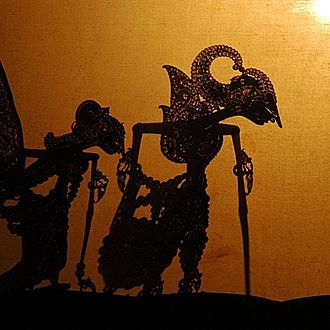
Nora โนรา
Nora dance, in my opinion, is both an art and a superstition. I'm not sure where it came from, but I've heard about how some Nora practitioners treat it like mediumship, saying that if they are chosen by the spirit, there is no way to say no (to the way of living as a Nora performer).
In Pattani, Yala, Narathiwat, and Satun, as well as parts of Songkhla and Chumphon, the majority of the population is Muslim. Because Thai Muslims and Thai Buddhists have some cultural differences, there are some noticeable differences in the area where Thai Muslims are more prevalent when compared to the rest of the country. However, even when they are a minority in other areas, they are still dispersed throughout the country, with the largest number of residents in Bangkok, so I would say that the culture in those areas will likely still be familiar enough to most people.
In the south, saltwater fisheries are much higher than in other regions due to the geographical location that is adjacent to the sea on both sides. This has resulted in differences in eating culture and other aspects of daily life in the South.
Most of the things you see in the series and from me are based in central Thailand, so I will skip it.
Example :
The protagonist of Siew Sum Noi is from Isan, as is Vee from Love Mechanics.
Country Boy takes place in the north.
Sky in Your Heart and A Tale of a Thousand Stars begin their story in Bangkok and then move the location to the north.
I Told Sunset About You is set in the South.
Index
75 notes
·
View notes
Text
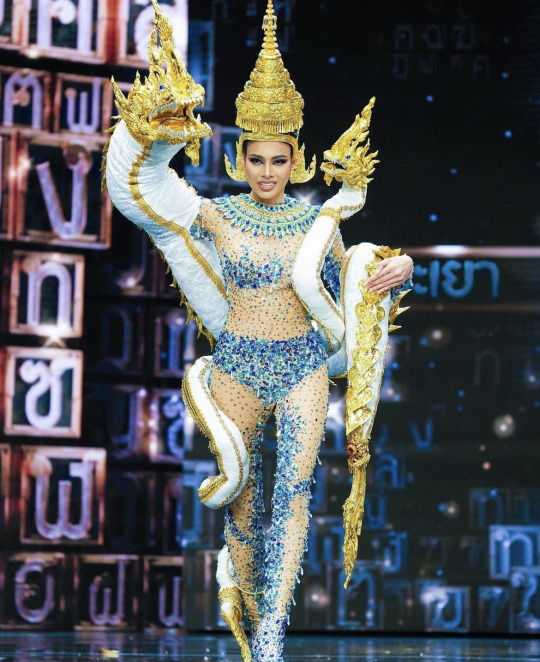
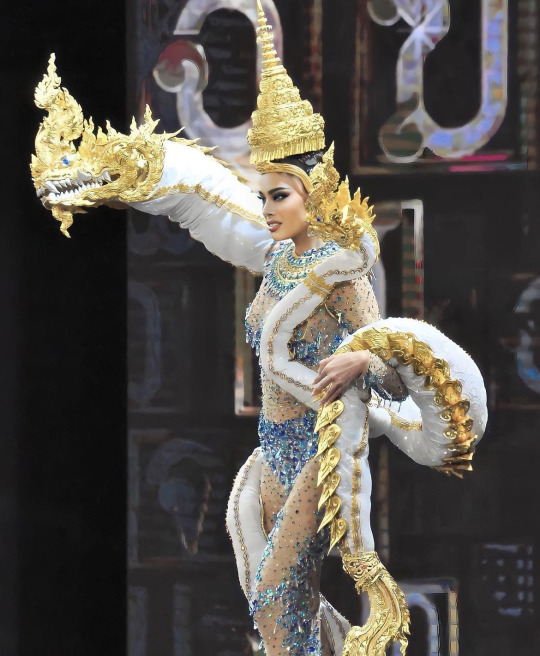
Miss Grand Phayao 2023 Provincial Costume
60 notes
·
View notes
Text
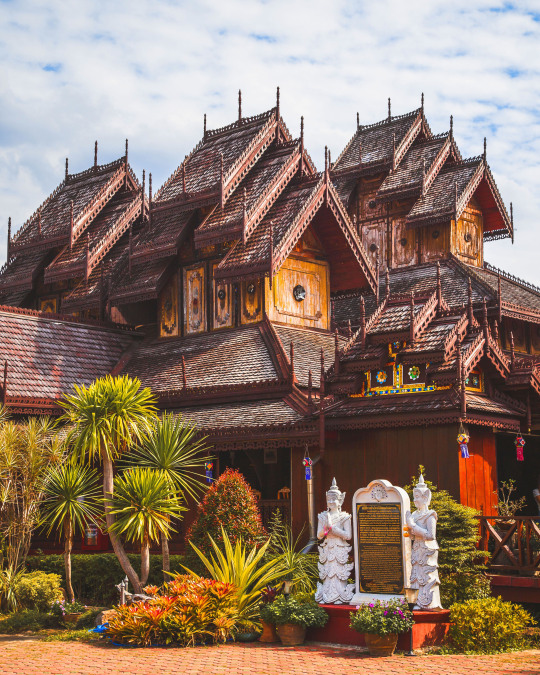
Wat Nantaram in Phayao is known for two things: first, the exquisite Thai Yai's all-carved-wood architecture; and second, its sacred blessings for those seeking true love.
#AmazingThailand #สุขทันทีที่เที่ยวไทย #สุขทันทีที่เที่ยวพะเยา
18 notes
·
View notes
Text

0 notes
Text
Submerged beneath an artificial lake in Northern Thailand is a 500-year-old temple known as Wat Tilok Aram. A stone inscription records that King Tilokkarad commanded Chao San Hua, the King of Muang Phayao, to establish the temple in 1476 – 1486 as an offering to the greatest king in the region. The temple stood for nearly five centuries until an irrigation project in 1939 inundated the temple, along with more than 10 other ancient sites.
21 notes
·
View notes
Text
I realize this post is the most niche most me thing ever lmao bUT- I'm watching the most recent and final* episode of DMD Friendship The Reality (it's on Mandee Channel @ YT) and was delighted to find it surprisingly having Thai subs and then delighted again, 20 minutes later, when I realized they did so because Namping and Keng, who are from แม่ฮ่องสอน (Mae Hong Son) and พะเยา (Phayao) respectively, have a long conversation where they dip in and out of คำเมือง (Kham Mueang) as they talk about their hometowns :>
*there's gonna be another ep.!!
#tumblr really is a site. the only site where it makes sense for me to go 🥰 at the combination of thai language and culture +#คู่จิ้น shenanigans + domundi artists#ignore me i wasn't here gotta go back to watching boys toe the line between friendly flirting and what i'll call baby's first fanservice lo#dmd friendship the reality#kengnamping#local woman harps on about linguistics#oh! one more thing before i get forcibly dragged off stage#mark having to seriously read out that the reward for winning the game is: ไปใช้เวลาพิเศษ ๆ ด้วยกัน djsshhdj dYING LAUGHING
2 notes
·
View notes
Photo
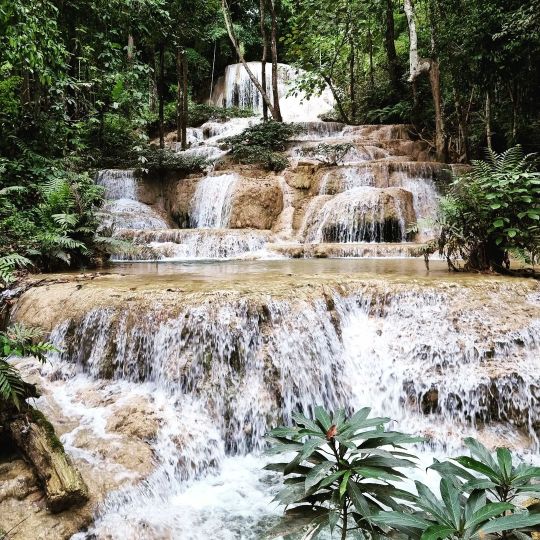
Unseen waterfall lost in the mountains of Ngao, 1h from Phayao, Mae Kae Waterfall. . . . #thailand #adayinthailand #visitthailand #waterfall #cascade #thailandinsider #unseenthailand #amazingthailand #travelphotography #thailandtrip #ngao #mountain #natureshots #nature #forest #jungle #offroad (à น้ำตกแม่แก้-น้ำตกเกาฟุ-หล่มภูเขียว อ.งาว จ.ลำปาง) https://www.instagram.com/p/ClWXSqnv_QB/?igshid=NGJjMDIxMWI=
#thailand#adayinthailand#visitthailand#waterfall#cascade#thailandinsider#unseenthailand#amazingthailand#travelphotography#thailandtrip#ngao#mountain#natureshots#nature#forest#jungle#offroad
2 notes
·
View notes
Text
Behörde warnt vor Extremhitze - gefühlte Temperatur über 52 Grad
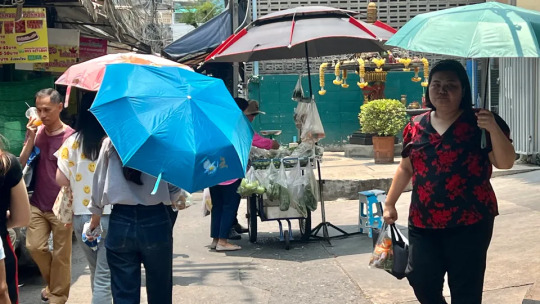
Bangkok: Den Einwohnern Thailands wird empfohlen, längere Aufenthalte im Freien zu vermeiden und die Gesundheit der gefährdeten Gruppen zu überwachen, da für den größten Teil des Landes am Samstag ein heißer bis sehr heißer Tag vorhergesagt wird, teilte das thailändische Wetteramt mit.
Die thermische Niederdruckzelle, die den Norden und Nordosten bedeckt, würde die Temperatur tagsüber erhöhen, während die Süd- und Südwestwinde vereinzelte Gewitterschauer und böige Winde in einige Gebiete in Oberthailand bringen würden, sagte die Abteilung.
Die Quecksilbersäulen zeigten Werte von fast 40 Grad. Der Hitzeindex, der die gefühlte Temperatur angesichts der gemessenen Luftfeuchtigkeit und anderer Faktoren beschreibe, liege jedoch bei über 52 Grad und sei »extrem gefährlich«, teilte die Behörde auf Facebook mit.
Wenn der Hitzeindex 52 Grad übersteige, gebe es ein großes Risiko, einen Hitzschlag zu erleiden. Dabei bricht die gesamte Temperaturregulation des Körpers zusammen.
Es riet den Menschen in den betroffenen Gebieten, drinnen zu bleiben und sich von großen Bäumen und ungesicherten Werbetafeln fernzuhalten. Autofahrer sollten bei Gewitter auf den Straßen Vorsicht walten lassen und Landwirte sollten sich auf Schäden an ihren Ernten und ihrem Viehbestand einstellen, fügte die Abteilung hinzu.
Unterdessen würde es an der Ost- und Westküste des Südens am Freitag aufgrund des Einflusses der über dem Golf und der Andamanensee vorherrschenden Südostwinde zu vereinzelten Gewittern kommen, teilte das Ministerium mit.
Die Wettervorhersage für die nächsten 24 Stunden sieht wie folgt aus:
Metropolregion Bangkok: Heißer bis sehr heißer Tag mit vereinzelten Gewittern in 10 Prozent des Gebiets. Die Mindesttemperatur beträgt 28 – 30 Grad Celsius und die Höchsttemperatur 37 – 42 °C.
Norden: Heißer bis sehr heißer Tag mit vereinzelten Gewittern und böigen Winden, hauptsächlich in den Provinzen Mae Hong Son, Chiang Mai, Chiang Rai, Phayao, Nan, Tak und Phetchabun. Tiefstwerte von 23 – 29 °C und Höchstwerte von 38 – 43 °C.
Nordosten: Heißer bis sehr heißer Tag mit vereinzelten Gewittern und böigen Winden, hauptsächlich in den Provinzen Loei, Nakhon Ratchasima, Buri Ram, Surin, Si Sa Ket und Ubon Ratchathani. Tiefstwerte von 25 – 29 °C und Höchstwerte von 42 – 44 °C.
Zentral: Heißer bis sehr heißer Tag mit vereinzelten Gewittern und böigen Winden, hauptsächlich in den Provinzen Uthai Thani, Kanchanaburi, Suphanburi und Ratchaburi. Tiefstwerte von 26 – 29 °C und Höchstwerte von 38 – 43 °C.
Osten: Ein heißer Tag mit vereinzelten Gewittern und böigen Winden, hauptsächlich in den Provinzen Nakhon Nayok, Chonburi, Rayong, Chanthaburi und Trat. Tiefstwerte von 26 – 29 °C und Höchstwerte von 35 – 42 °C. Bei Gewittern sind die Wellen weniger als einen Meter hoch und über einen Meter hoch.
Süden (Ostküste): Heißer Tag mit vereinzelten Gewittern, hauptsächlich in den Provinzen Surat Thani, Nakhon Si Thammarat, Songkhla, Pattani, Yala und Narathiwat. Tiefsttemperaturen von 24 – 28°C und Höchsttemperaturen von 35 – 40°C. Wellen mit einer Höhe von weniger als einem Meter und bei Gewittern über einem Meter.
Süden (Westküste): Heißer Tag mit vereinzelten Gewittern, hauptsächlich in den Provinzen Ranong, Phang Nga, Krabi, Trang und Satun. Tiefsttemperaturen liegen bei 26 – 28°C und Höchsttemperaturen bei 36 – 38°C. Wellen mit einer Höhe von weniger als einem Meter und bei Gewittern über einem Meter. / The Nation / Spiegel
Read the full article
0 notes
